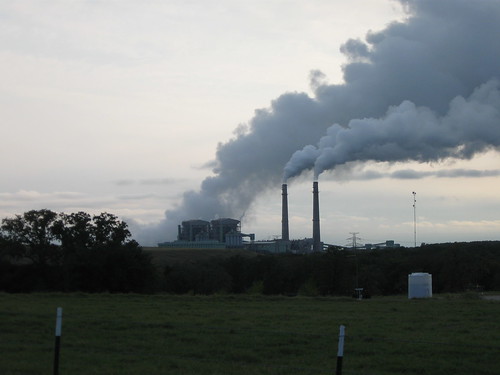In a breaking story from the AP, we learn that the air pollution rules first proposed under George W. Bush’s EPA are  moving forward.
moving forward.
The Environmental Protection Agency said the new rules would cut sulfur dioxide emissions by 71 percent from 2005 levels by 2014 and nitrogen oxide emissions by 52 percent in the same time frame.
The regulation, known as the Clean Air Interstate Rule, requires 31 states from Massachusetts to Texas to reduce emissions that contribute to smog and soot and can travel long distances in the wind. The agency predicted the rule would prevent about 14,000 to 36,000 premature deaths a year.
The rule would overturn and toughen rules issued during the administration of former President George W. Bush.
What happened was the Bush Administration took a look at the scientific reviews for where the levels of these pollutants should be to protect health. When they published their new air quality standards, they were actually less strong than the science required.
And while legal wrangling is fun, the real story here is the impact on human health.
“We’re working to limit pollution at its source, rather than waiting for it to move across the country,” Jackson said in a statement.
The proposed reductions should save billions of dollars in avoided health costs and sick days and save thousands of lives each year, Jackson said. Those benefits would far outweigh the estimated $2.8 annual cost of compliance, she said.
Reducing pollution from power plants means fewer sick kids who have to miss school, it means fewer people who have to be rushed to the ER for an asthma treatment, and even means fewer deaths. And, of course, reducing these emissions most likely also means a reduction in greenhouse gas emissions, another added benefit we can all be happy about.
###
By promoting cleaner energy, cleaner government, and cleaner air for all Texans, we hope to provide for a healthy place to live and prosper. We are Public Citizen Texas


